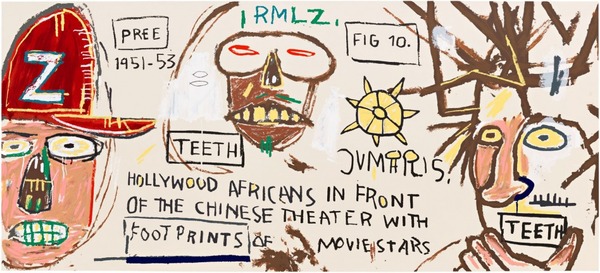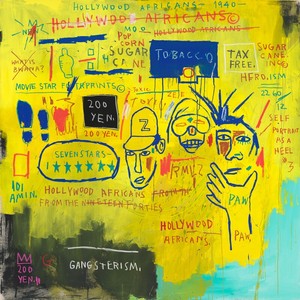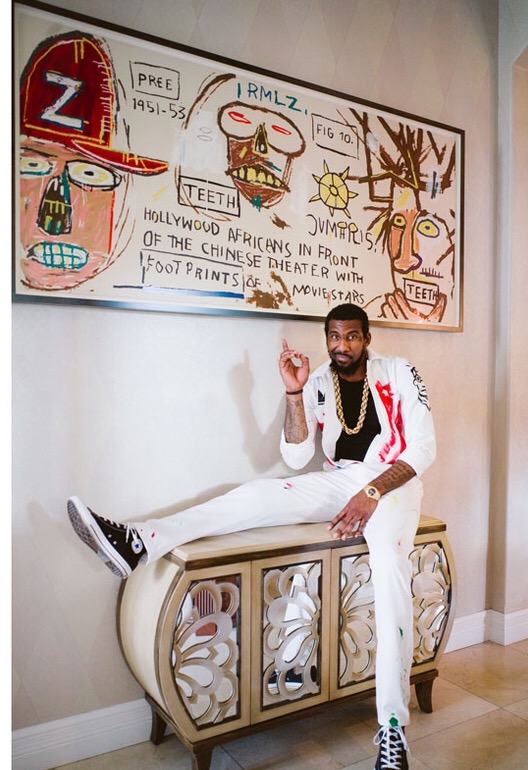Tag Archives: chinese
WOW! – Work of the Week 8/24/15
Roy Lichtenstein, Landscape with Boats
 Roy Lichtenstein
Roy Lichtenstein
Landscape with Boats
1996
Lithograph and screenprint in colors on Lanaquarelle watercolor paper
27 7/8 x 58 1/8 in.
Edition of 60
Pencil signed, dated and numbered
About This Work:
In Roy Lichtenstein’s Landscapes in the Chinese Style, Lichtenstein’s engagement with the Chinese landscape tradition, in this case the Chinese tradition of the Song Dynasty, appears to reflect both light-hearted irony and a more somber appreciation for the beauty of the form.
Lichtenstein was greatly influenced by Edgar Degas’ 1944 exhibition at the Metropolitan Museum. He was struck by Degas’ ability to suggest the features of a landscape with just a few strategic swathes of gray, thus allowing an unformed, nebulous shape to stand for exacting form.
This work is first a landscape: you can see a little boat in the corner where two men are trying to find their way. It’s very moving because of the disproportionate scale between the sea and the figure. On the other hand, this image is really quite abstract, the shapes dramatically flowing around the space. It summarizes many of the issues that interested Lichtenstein throughout his career, particularly this tension between the figurative and the abstract.
Lichtenstein re-interpreted the traditional scenes and motifs using his own established methods and materials. He reflects on the harmony and balance of the ancient works through his unmistakable and edgy lexicon of modern visual effects. Carefully stylized, Landscapes in the Chinese Style are formed with simulated Benday dots and block contours, rendered in hard, vivid color. The overt irony of his earlier Pop works cedes to aestheticism and formal delicacy: the Benday dots do not mimic the arbitrary techniques of commercial illustration, but rather appear in cloud-like patches that express the effervescence of space and form, as in this dreamy, abstract work called Landscape with Boats.
About The Artist:
Roy Lichtenstein (October 27, 1923 – September 29, 1997) was a prominent American pop artist. His work defined the basic premise of pop art better than any other through parody. Favoring the old-fashioned comic strip as subject matter, Lichtenstein produced hard-edged, precise compositions that documented while it parodied often in a tongue-in-cheek humorous manner.
In 1961, Lichtenstein began his first pop paintings using cartoon images and techniques derived from the appearance of commercial printing. This phase would continue to 1965, and included the use of advertising imagery suggesting consumerism and homemaking. His first work to feature the large-scale use of hard-edged figures and Ben-Day dots was Look Mickey in 1961. This piece came from a challenge from one of his sons, who pointed to a Mickey Mouse comic book and said; “I bet you can’t paint as good as that, eh, Dad?”
Lichtenstein had his first one-man show at the Castelli gallery in 1962; the entire collection was bought by influential collectors before the show even opened. It was at this time, that Lichtenstein began to find fame not just in America, but worldwide. His work featured thick outlines, bold colors and Ben-Day dots to represent certain colors, as if created by photographic reproduction. However, rather than attempt to reproduce his subjects, his work tackled the way mass media portrays them.
In the 1970s and 1980s, his style began to loosen and he expanded on what he had done before. His style was replaced with more surreal works. His “mirror” paintings consist of sphere-shaped canvases with areas of color and dots. Lichtenstein also created a series of still lifes (paintings that show inanimate objects) in different styles during the 1970s. In the 1980s and 1990s, Lichtenstein began to mix and match styles. Often his works relied on optical (relating to vision) tricks, drawing his viewers into a debate over the nature of “reality.”
Lichtenstein’s work is included in numerous museums, such as the Albright-Knox Art Gallery, Buffalo, NY; Art Institute of Chicago, Chicago; Denver Art Museum, Denver; Metropolitan Museum of Art, NY; Foundation Beyeler, Basel, Switzerland; Museum of Contemporary Art, Los Angeles, Museum of Modern Art, New York; National Gallery of Art, Washington D.C.; Philadelphia Museum of Art, Philadelphia; Solomon R. Guggenheim Museum, New York; Stedelijk Museum, Amsterdam; and Whitney Museum of American Art, New York.
For more information and price please contact the gallery at info@gsfineart.com



